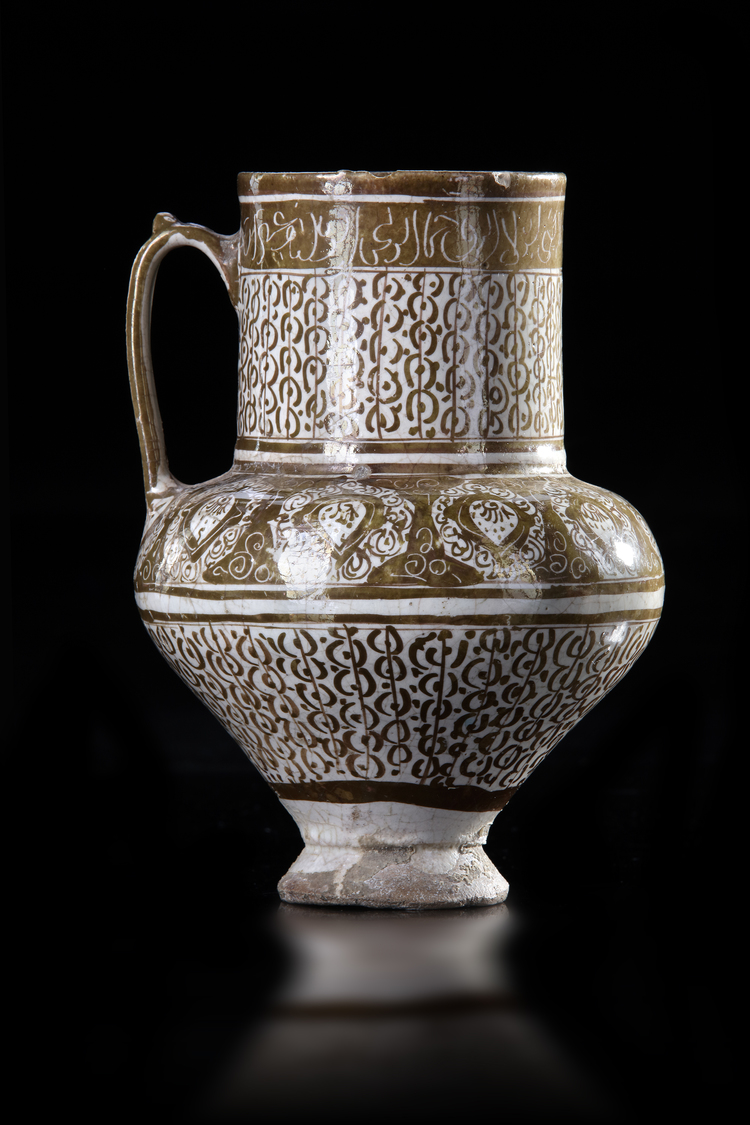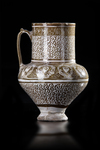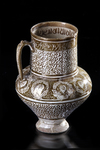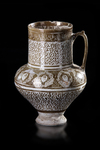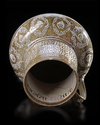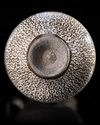* A KASHAN LUSTRE POTTERY JUG, PERSIA, 13TH CENTURY
A pottery jug standing on a splayed unglazed foot-ring and base, globular body with tall and wide cylindrical neck with handle and small thumb-piece on top, painted in brownish lustre. Chain and scroll motifs on the lower part of the body, on the upper part ten lobed medallions reserved in white and decorated with leaf and scroll patterns painted in lustre, chain and scroll motives on the neck and cursive inscription (unread) in white round the rim. Inside the rim Kufic characters of kalimaat al-Tawhid in lustre.
Inscriptions around the rim: Repetition of Persian verses (mostly undeciphered).
Height: 18.5 cm.
PROVENANCE
Private collection, Switzerland
CATALOGUE NOTE
Lustre – a metallic glaze – was first used on pottery during the ninth century A.D. in Iraq, but gained more popularity from the tenth century onwards. The town of Kashan became the centre of the Persian lustre industry, and produced some of the most beautiful examples. It was in the thirteenth century that fritware, similar to the ancient Egyptian faience, was developed; composed of quartz and clay, it produced ceramics with a pleasing sheen.
- SPECIAL NOTICE
This lot is imported from outside the EU for sale using a temporary import regime. Import VAT is payable (at 9%) on the hammer price. The 30% buyers premium is subject to 21% VAT for EU citizens. When the buyer of this is registered an EU address but wishes to export the lot or complete the import into another EU country he must contact Oriental Art Auctions after the auction.
